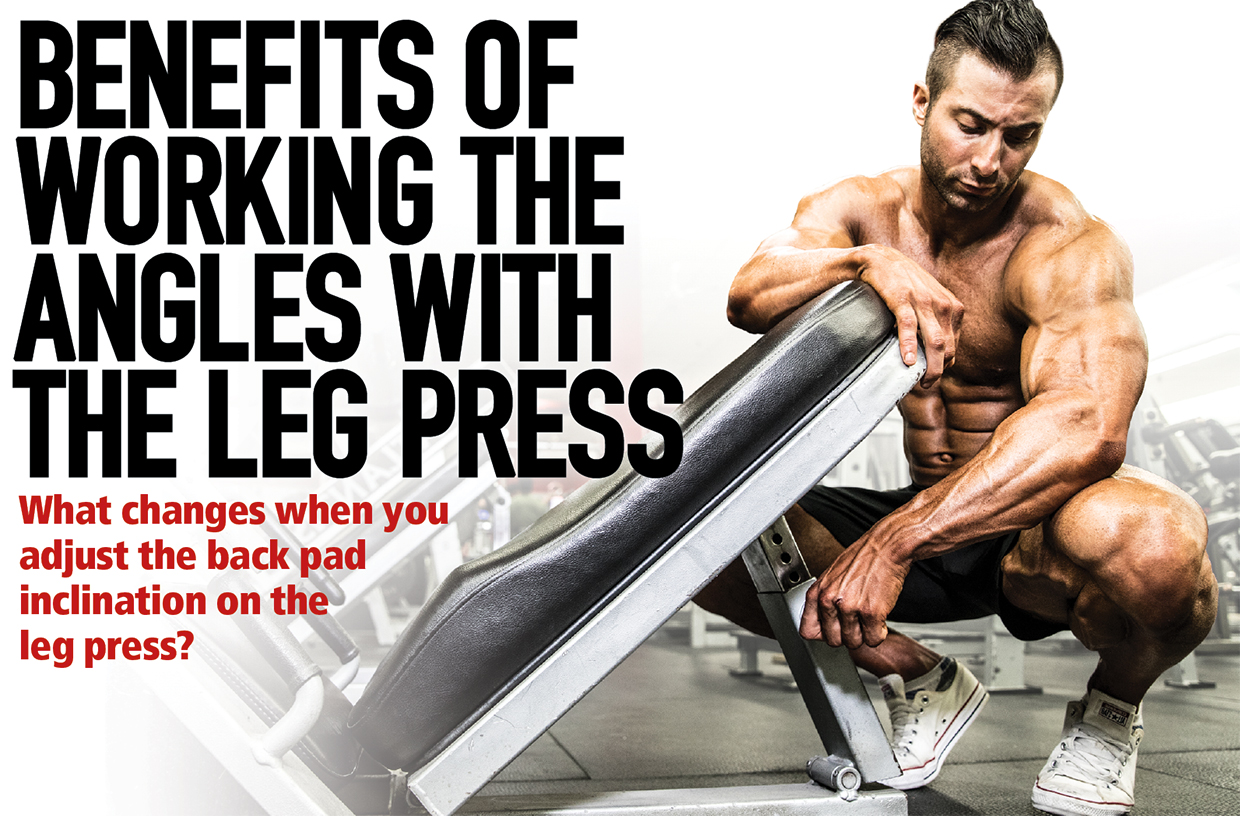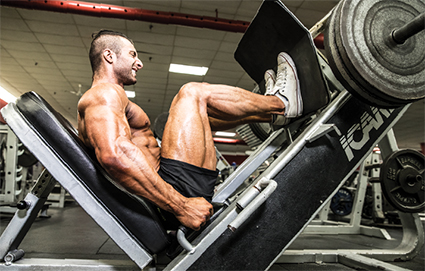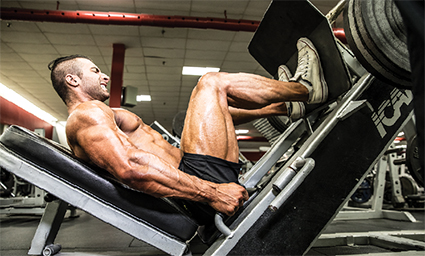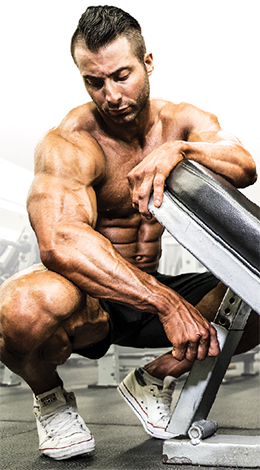Benefits of Working the Angles with the Leg Press

What changes when you adjust the back pad inclination on the leg press?
In your quest to build strong, impressive legs, don’t overlook the leg press. This versatile piece of equipment can hit your legs in more ways than you may think—all with one simple adjustment.

What Do You Press, Bro?
The leg press is a universally popular machine, taxing the legs while supporting the back. This compound movement recruits all the major muscles in the legs—hamstrings, glutes, and quads. When it comes to leg day, the squat may get all the glory, but don’t neglect the leg press. The stability it offers the upper body allows you to completely focus on your legs and has been found to stimulate the vastus medialis better than most leg exercises.

Strength, Safely
Traditionally, the leg press is used with a 90-degree angle at the hips. The angle, combined with the solid back support, creates an incredibly strong position. This allows you to load the machine up and cause some serious stress to the legs. In fact, compared to most exercises, the leg press is likely where you can lift the most weight. Under this much weight, it’s important to ensure you’re using solid technique. Two main concerns are the knees and lower back, which can be protected by keeping a slight bend in the knees at the top (never locking them out) and making sure your glutes stay in contact with the seat at the bottom of your press.

Change It Up
Most leg press machines have the ability to adjust the angle of the back support, a benefit many people overlook. Making a small change to this component will recruit different muscle groups in the legs. On your next leg day, try lowering the back pad to its lowest setting. Lowering the upper body will open up the hips, enabling you to get more mobility and moving the work away from the front quads and calling in the hamstrings and glutes. Be sure to focus on pushing the plate away through your heels, which will further enhance the recruitment of these posterior chain muscles.
It’s all about the angle of the hips. When the hip angle is open (with the back pad lower), your body will create a straighter line at the peak of the movement. As your body comes closer to making this straight line, you achieve more hip extension. This will recruit more lower body muscles and different ones than a traditional leg press position with a smaller hip angle.
 Reap the Rewards
Reap the Rewards
Obviously, applying this change will depend on your personal focus. Often, the idea of “revolutionizing” an exercise by making technical adjustments is glorified, but in this case, it’s brilliant and truly advantageous for your progress. If you’re a person who hits quads and hamstrings in two different sessions, you can incorporate the leg press on both days with the simple change to the machine. Be aware that you may need to decrease the weight as your quads are likely stronger, and the change in angle will likely stress muscles in a new way. However, when you’re looking to make progress with your strength and size, new challenges are critical. Now, get under some weight and press!
Click HERE to sign up for our free newsletter!

